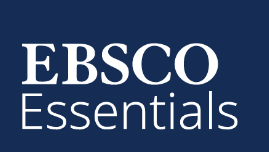Developing guidelines in revenue budget allocation of Faculty of Education, Mahasakham University
Keywords:
Developing Guidelines, Budget allocation, Faculty of EducationAbstract
The purposes of this study aimed at 1) examining problems in revenue budget allocation of the Faculty of Education, Mahasarakham
University, and 2) developing guidelines in revenue budget allocation of the faculty. The samples of this study were 106 personnel working at the faculty. The research instrument used was a questionnaire. The data was analyzed by using basic descriptive statistics ; mean and standard deviation.
The results revealed that.
The personnel working at Faculty of Education, Mahasarakham University had overall opinions towards problems at a moderate level
( =3.16). Problems ranked from top to the bottom, were income estimation (
=3.22), expense estimation of revenue budget (
=3.21), planning of revenue budget, and real income investigation (
=3.07).
The guidelines in revenue budget allocation of the Faculty of Education, Mahasakham University can be divided into f ve aspects.
First, income estimation ; collection and surveying data ought to be up-to-date so that off cers or related persons can be educated and
understood at the procedure and criteria estimation. Furthermore, it is suggested that retrospective statistics be gathered concerning related aspects and also public relations for additional student enrollment in every channel. Second, expense estimation ; it is recommended that unnecessary expense should be stopped. Moreover, there should be prioritizing of important missions or integrating of related activities in order to create more income such as academic service, curriculum design, short seminar etc. as well as considering number of students according to an enrollment plan. Moreover, learning and sharing is recommended so that they can agree with instructors and off cers in requesting a budget for doing a project. The department should also plan for future spending and adhere to the faculty’s f nancial amount. It is also suggested that income is distributed to sub-departments and the overall department. Third, planning of revenue budget ; the results found good that there were good procedures for controlling and
monitoring. However, these should be fl exible and the disbursement plan should be from the department because this group allocates the budget. Fourth, real income investigation ; the university or the faculty is suggested to develop an MIS system. Fifth, monitoring and evaluating the use of revenue budget ; the recommendation for this aspect is to provide guidelines in monitoring by activating related institute to understand university’s policies. Likewise, meetings should be held for sharing and monitoring by the faculty head or the secretary who can check real income rapidly and in real time. Furthermore, technology is suggested to integrate to check real income as well as adding more channels for payment, such as by QR Code.
In conclusion, the problems in revenue budget allocation of the Faculty of Education, Mahasarakham University were in moderate
level in every aspect. Therefore, based on this study, developing the guidelines in revenue budget allocation of Faculty of Education,
Mahasarakham University can be more effective, have increased coverage, and be responsive to the faculty’s missions.
Downloads
Published
Issue
Section
License

This work is licensed under a Creative Commons Attribution-NoDerivatives 4.0 International License.





